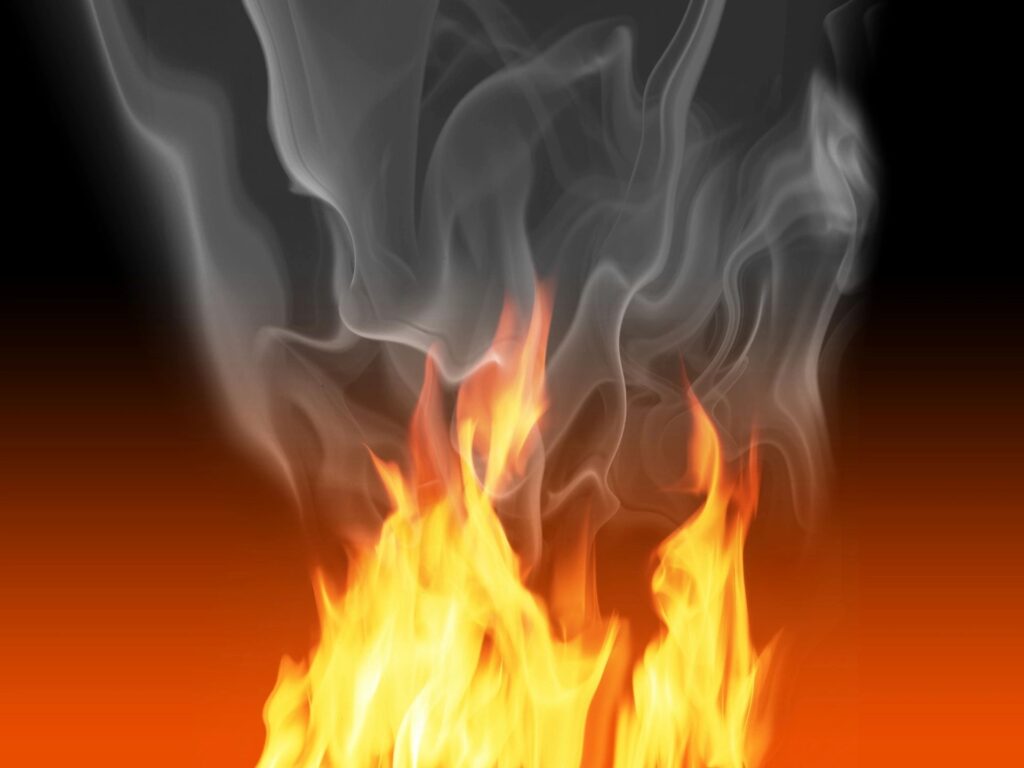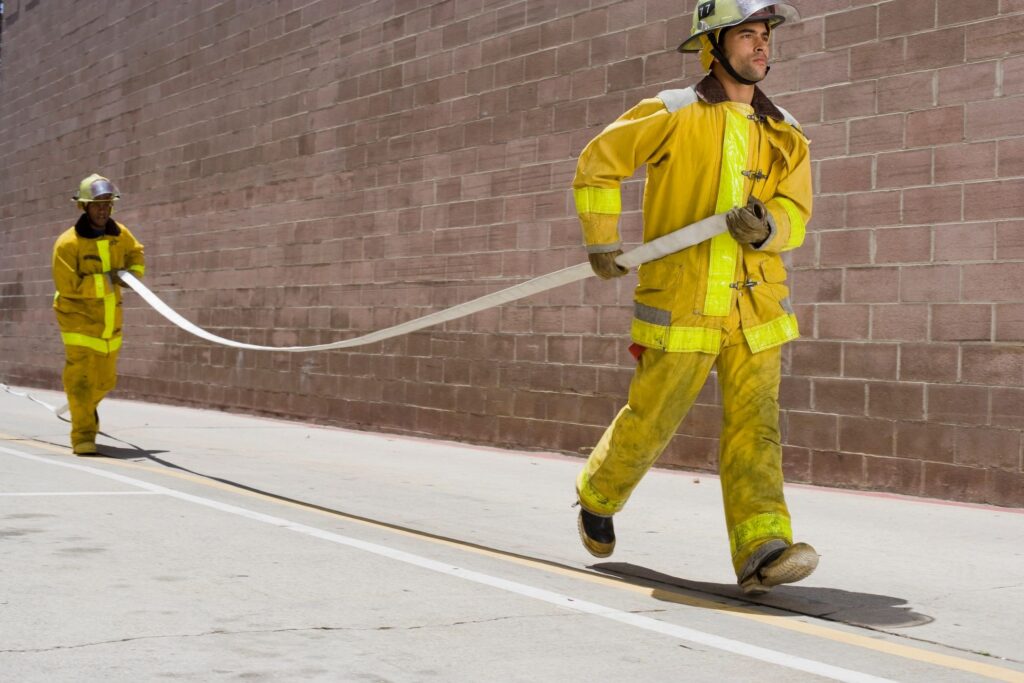
The Christmas season is underway and many homes are already decorated with live trees. Christmas trees are usually the focal point for every decorated home, but they also quickly burn if there is ever a fire. Some causes of these fires are the electrical distribution or lighting equipment as well as some type of heat source (such as a candle) being too close to the tree. One of the most common causes of real tree fires is a dried-out one. Check water levels daily and keep them hydrated.
Stay safe all year round – there are many fire safety tips you can use to protect your family and home and avoid a tragedy, here are 10 to get you started.
1. TEST YOUR SMOKE ALARMS REGULARLY
Smoke detectors are your first line of defense against fire because of their early warning capability. These days, they’re hardwired into homes to monitor smoke and carbon monoxide and have the ability to send alerts to your phone.
If you’re using a battery-operated one, do a routine check every six months to be certain it is still working. All it takes is pressing a button on your alarm. A weak beep means it’s time to change its batteries as soon as you can.
2. Check that HEATING SOURCES ARE WORKING PROPERLY
The National Fire Protection Association (NFPA) says heating equipment is the top cause of fire in American homes. Any faulty heating sources like space heaters, central heating systems, and fireplaces could trigger fire when ignored or left unchecked. Have a professional check-up once a year to be sure they are working safely and optimally.
In the meantime, do some prevention maintenance like cleaning the air filters regularly. If you are using a space heater, position it away from flammable objects. These little details are critical if you consider how debris and dust can be fire hazards when they get too close to a heat source.
3. Keep your oven/stove clean
Make sure to clean your stove and oven after every use. In particular, cooktops and gas stoves should be wiped after cooking. Modern ovens have a self-cleaning function that you should take advantage of every few months.
4. PAY ATTENTION WHEN COOKING
More than half of kitchen fires are caused by cooking disruptions. Remember that all it takes is a few seconds before things in the kitchen begin to catch fire.
Avoiding minor to major interruptions while cooking is a top priority to ensure the safety of your home. Some things you should remember:
- Stay in the kitchen while cooking — if you must leave the house for any reason, turn the stove or oven off until you return.
- For food that takes a long time to prepare, check back frequently. This will help prevent potential causes of fires, for example, if the liquid has boiled away and food is cooking dry.
- Keep items that can easily catch fire — oven mitts, paper towels, cloth towels, food packaging, wooden utensils — away from the cooking source.
- Be especially careful with oils and grease. These combustibles can’t be extinguished with water. Either smother the flames or use a kitchen-rated fire extinguisher.
5. ALWAYS CHECK YOUR DRYER’S AIRFLOW
Dryer fires occur in 2,900 homes in the United States each year due to clogged vents or a filter buildup that can cause a fire. However, this situation is highly preventable if you follow best practices.
Get your dryer inspected annually or every few months – there is no substitute for this. Next, always check if your lint trap is clean before putting in a new load of laundry.
Lint or small clothing items like socks can also get stuck at the back of the machine. So make sure to look for those and remove them prior to operating your dryer.
6. BE CAREFUL WITH CORDS, appliances & Outlets
Make sure that you don’t have too many appliances plugged into an outlet, which can cause it to overload. If this is the case, you should immediately lessen the load and keep things manageable for each of your outlets. Unplug countertop appliances like toasters or air fryers when you’re not using them.
Another instance to avoid is ignoring frayed or chewed cords. One spark from the exposed wires is all it takes for a fire to start. It’s a necessity to replace damaged wires as soon as you notice them, to avoid the risk of fire.
Check your cord placement. Cords tend to get hot so you want to avoid running them under a rug or between your wall and furniture.
Often, homeowners can see signs of potential electrical problems long before a fire actually occurs. Here’s what you should watch out for:
- Lights dimming or flickering
- Wall plates sooty or turning brown
- Hissing sounds in the wall or in fixtures when they turn on
- Switches or outlets feel hot while operating
7. STORE FLAMMABLE PRODUCTS SAFELY
Common hair products, cosmetics, and household cleaners can all be classified as flammable products. They all tend to combust when placed too close to a large heat source.
To err on the side of caution and avoid fire and smoke damage, you should always check the label of items you purchase, to know which products are prone to catch fire when exposed to heat sources like space heaters. Then, ensure you keep your flammable products in a cool, dry place.
8. PRACTICE CAUTION WITH CANDLES
Scented candles are commonly used in households, especially around the holidays. But if you don’t use them carefully, they could cause fire and smoke damage. Handling them with total awareness of their potential fire risk is key. Here are some rules to remember:
- Always put the candles out if you’re leaving a room.
- Blow them out before you fall asleep.
- Place them in a spot that is far away from objects that can easily catch fire like curtains and blankets.
- Never position them on an uneven surface such as a carpet to prevent them from tipping over.
- Keep lit candles away from your pet.
9. KEEP YOUR FIREPLACE SAFE
Your fireplace can be a source of fire if not maintained correctly. For safe usage, fireplaces must be maintained properly – they should be inspected and repaired at least once annually (even if you only burn a fire in the fireplace one time per year, cracks in the chimney, or the presence of bird nests can cause fires). Household fires start when chimneys fall into disrepair or when fires are burned unattended. When you have a fire going, it is also advised to stay in the room. Dispose of the ashes properly, giving them more than enough time to cool down. To be sure, put them in a metal container specifically designed for the disposal of ashes.
10. INVEST IN A FIRE EXTINGUISHER
Fire extinguishers can save lives, making them a worthwhile investment. Having them at home can bolster your feelings of safety. At the same time, they are also genuinely useful in case a fire breaks out. Put them in the high-risk areas of the house, such as the kitchen and laundry room. Also, check if your units are not yet expired. They usually last an average of 5 to 15 years.
A quick inspection of the pressure gauge is also needed. Just check if the needle falls in the fire extinguisher’s green area, and you’re good to go.
The Bottom Line: House fires can be deadly if you’re not prepared. Fortunately, there are many things above and beyond the 10 tips listed here that you can do to protect yourself and your loved ones from fires. Be sure to have a plan in place to evacuate your home in the event of a house fire. Know where all of your fire extinguishers are located, and teach everyone in the home how to use them and where they are located.
Practice fire safety and response to fires with the children in your home. If you have pets, live with very young children, or live with someone elderly, work with people in your home to ensure safe evacuation.

 See Our National Coverage Map
See Our National Coverage Map